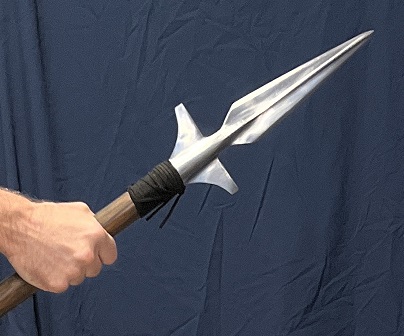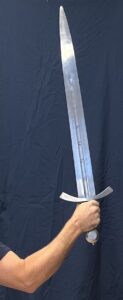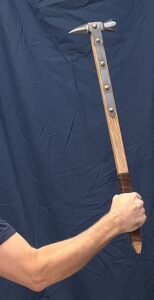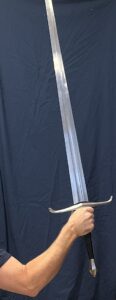Spear
This is my spear:

I already had a shaft that I was using as a makeshift quarterstaff. It’s basically just a ~6-foot wooden rod I bought at Lowe’s Home Improvement some time back. I saw this spearhead available on Kult of Athena, liked the look (with the winged lugs), and figured I could affix it to my “quarterstaff”. I had to sand down one end of the shaft to get it to fit in the base of the spearhead. The head fastens on via two screws. I added the leather strap just for extra style, and to conceal the screws. Although the edges of the spearhead are not sharpened, the point is acute enough that a good thrust will definitely penetrate an unarmored opponent. When the Zombie Apocalypse happens, this weapon will easily puncture zombie skulls.
The Old Adventurer











